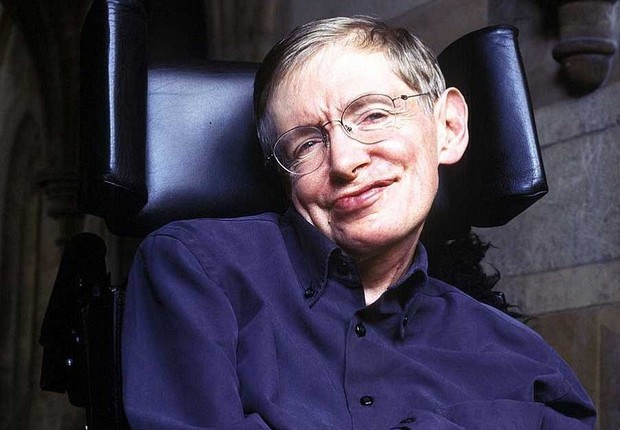19/03/2018
Stephen Hawking, who, despite nearly total physical immobility, made fundamental contributions to Cosmology, in particular, to the theory of Black Holes, passed away on March 13, 2018 at the age of 76. Born in 1942, he was was diagnosed with amyotrophic lateral sclerosis (ALS) when he was only 21. Through his best-selling popular science book "A Brief History of Time" and guest appearances on TV comedies such as "The Simpsons" and "The Big Bang Theory", he became a superstar of theoretical physics.

Perhaps with the sole exception of Einstein, theoretical physicists do not usually achieve the kind of popular fame enjoyed by Hawking. Without doubt this was due in part to the path-breaking work he did in Einstein's Theory of General Relativity in spite of his progressively debilitating illness. In the seventies he was confined to a specially designed motorized wheelchair sand was able to speak only with great difficulty. He later survived a bout of pneumonia, but the operation that saved him destroyed his voice box. Thanks to a specially designed computer attached to his wheelchair, he became able to "speak" again in a synthetically generated voice. In an extreme form of British understatement, he once said he was fortunate in being in a profession in which his disabilities did not present a serious handicap. The tremendous success of his popular science book "A Brief History of Time" added hugely to his fame as well as bringing in the funds needed for his increasingly expensive care.
His most important contributions to physics involve Black Holes. The first such solution to Einstein's field equations of 1915 was found in 1916 by Karl Schwarzschild. Einstein thought the solution was mathematically magnificent but, due to its perfect spherical symmetry and its singularity at the origin where energy becomes infinite, too artificial be realized in nature. The Singularity theorems first put forward by Roger Penrose in 1965, and later by Hawking and Penrose together showed the opposite was the case: Such singularities are inevitable in General Relativity. Hawking showed in particular that the Big Bang corresponded to a particular type of singularity. In 1966, the New Zealand physicist Roy Kerr discovered a rotating black hole solution specified only by its mass and rate of rotation. Astronomical observations show that such black holes, sometimes a billion times more massive than the sun, sit at the centers of every galaxy, including our own. At Sabancı University, Dr. Emrah Kalemci and his group are part of an international search for these giant black holes. The observed relation between their masses and rotation rates are consistent with the Kerr solution; in fact, they tend to spin near the highest rates allowed by the Kerr geometry.
Einstein's theory is "classical", which means it does not take quantum effects into account. Perhaps Hawking's most original contribution is to show that when this is done, black holes, which, classically, do not even let light escape their surface, turn out not to be black but instead "glow" like a piece of hot metal, emitting what is called black-body radiation. This was a shocking discovery. Hawking initially reasoned that since, according to classical gravity, all the detailed information about an object (except its mass and spin) falling into a black hole is lost while quantum mechanics preserves information, quantum theory and General Relativity are incompatible in the presence of black holes. Of these two universally valid theories, Hawking initially believed that it was quantum theory that failed and had to be modified. This was met by a barrage of sophisticated objections from many leading physicists, and Hawking had to retract, even conceding a bet with a colleague. The paradox, however, continued to haunt physics, and Joe Polchinski, who died shortly before Hawking, resurrected the problem by showing that quantum theory predicts a blazing wall of fire at the surface of the black hole. It is most unfortunate that Hawking did not live to see the resolution of this most fundamental paradox. Perhaps some of us will be lucky enough to see it.
Cihan Saçlıoğlu / Sabancı University Faculty of Engineering and Natural Sciences




